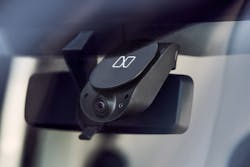In a country as litigious as the United States, fleets seeking to avoid dreaded nuclear verdicts must do everything they can to prove to the courts that they've done their due diligence when it comes to safety. Fleets are working to ensure that the proper technology is in place to address all the various ways drivers can be distracted to prevent collisions, save dollars, and save lives.
“Everything is discoverable in civil litigation,” said Phil Moser, a former police officer and VP of customer development at Driving Dynamics, a provider of driver safety training. “The attorney’s going to jump on there, and they're going to say, ‘If you had forward-brake assist, or if you had had lane-departure assist, lane-keep assist, this crash wouldn't have happened.’”
“They subpoena all the emails and find out if you made a financial decision not to put that technology in your vehicles. Then are you opening yourself up to that? I think that's a discussion that many organizations have to have with their legal departments.”
See also: Eliminating distractions for new drivers
Fleets overeager to adopt new technologies must do their research to ensure those technologies have empirically proven benefits because, if that technology is later abandoned, there could be legal blowback in future court proceedings.
In talking with lawyers and insurance experts, he discovered there’s a possibility that if a carrier rolls back a technology for not meeting its fleet's needs or for not being financially viable to deploy at scale, the consequences of a lawsuit could be worsened. An argument could be made that a crash was caused not only by negligence but also by gross negligence because an effort once made to enhance safety is being made no longer.
See also: Samsara reports customer crashes down, fuel efficiency, and utilization up
In a culture where jurors might see carriers as faceless corporations racing trucks down the freeway in reckless pursuit of profit over well-being, it’s essential that a company, well before any litigation, documents what it has done to prioritize safety from the moment of a wreck all the way back to hiring prospective drivers.
“You need to start creating your safety story,” Moser said. “You need to show everything you’ve done from the time of hire, pre-hire background checks, and then education, what you’ve taught them in continuing education, and if they do have problems that you’re taking care of it. If you can show that to a court or to a jury that you’ve done your due diligence, it’s going to go far better for you.”
Higher ROI
AI dashcams pay for themselves. For example, Fleets that have implemented AI dashcams from Nauto typically see their collision loss drop 40% to 80%, said Nauto’s chief products officer Yoav Banin. Depending on the size of the fleet, this results in savings anywhere from thousands of dollars up to eight figures.
After Sprint Waste Services in Houston deployed Samsara dashcam technology across its fleet consisting of 400 vehicles and 300 drivers, it saw a 58% decrease in speeding and a 50% increase in miles per safety incident. Using dashcam video, the company was able to exonerate its drivers in 52% of accidents.
A year after installing dashcams, Sprint Waste decreased driver turnover rate to a mere 25.6%—more than three times lower than the industry average.
“If not for Samsara and the safety improvements Samsara helped drive—exonerating drivers, reducing accident frequency and severity—our premium increase would have been closer to the 30% or 40% seen throughout the market, rather than 12%,” said Dave Nelson, president of Sprint Waste. “We estimate that we saved approximately $500,000 in real, out-of-pocket insurance premiums at our last insurance renewal.”
About the Author
Scott Keith
Scott Keith is a former fleet owner digital editor, who was on staff from 2022 to 2023.



